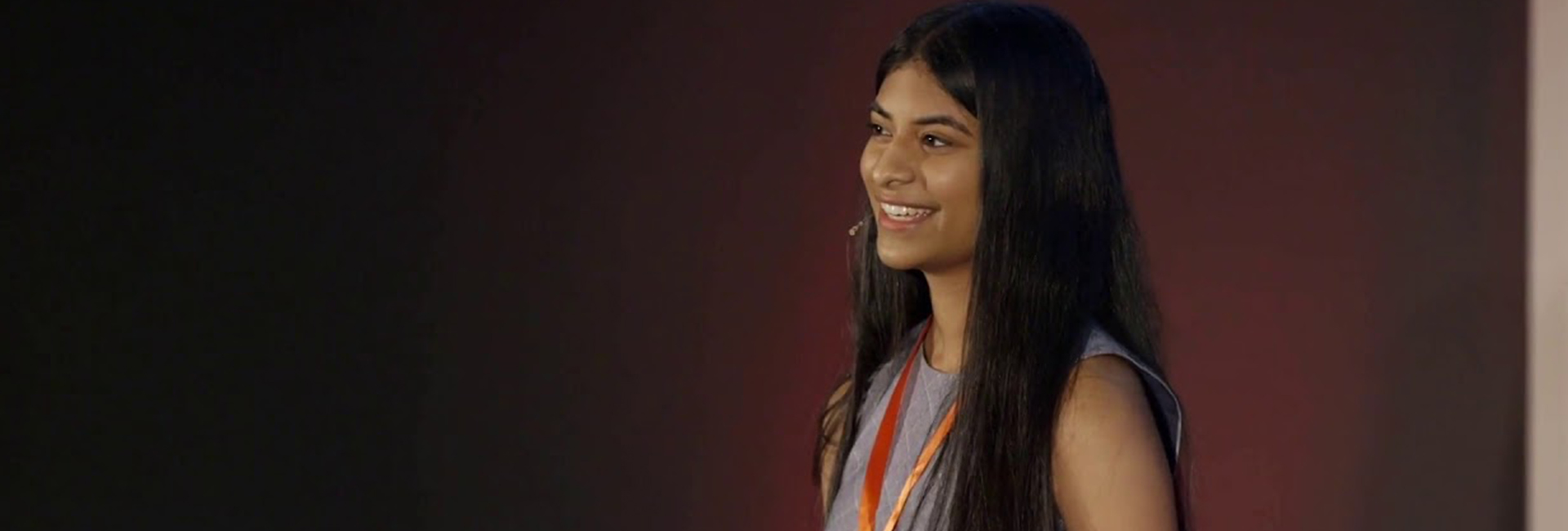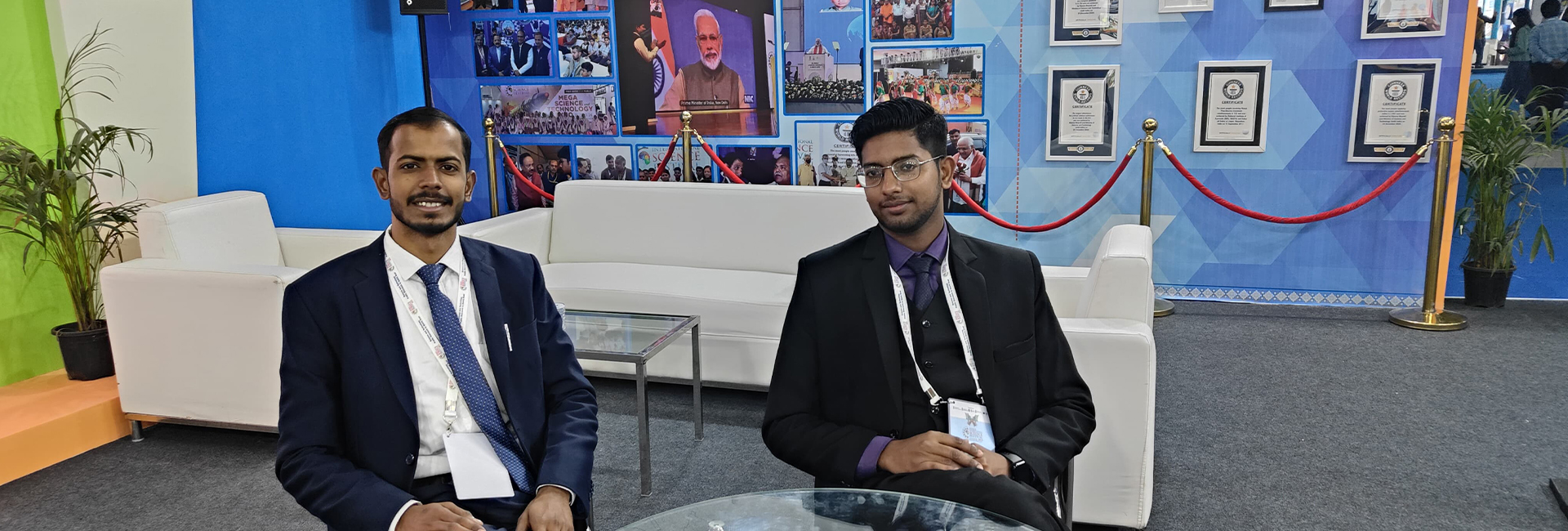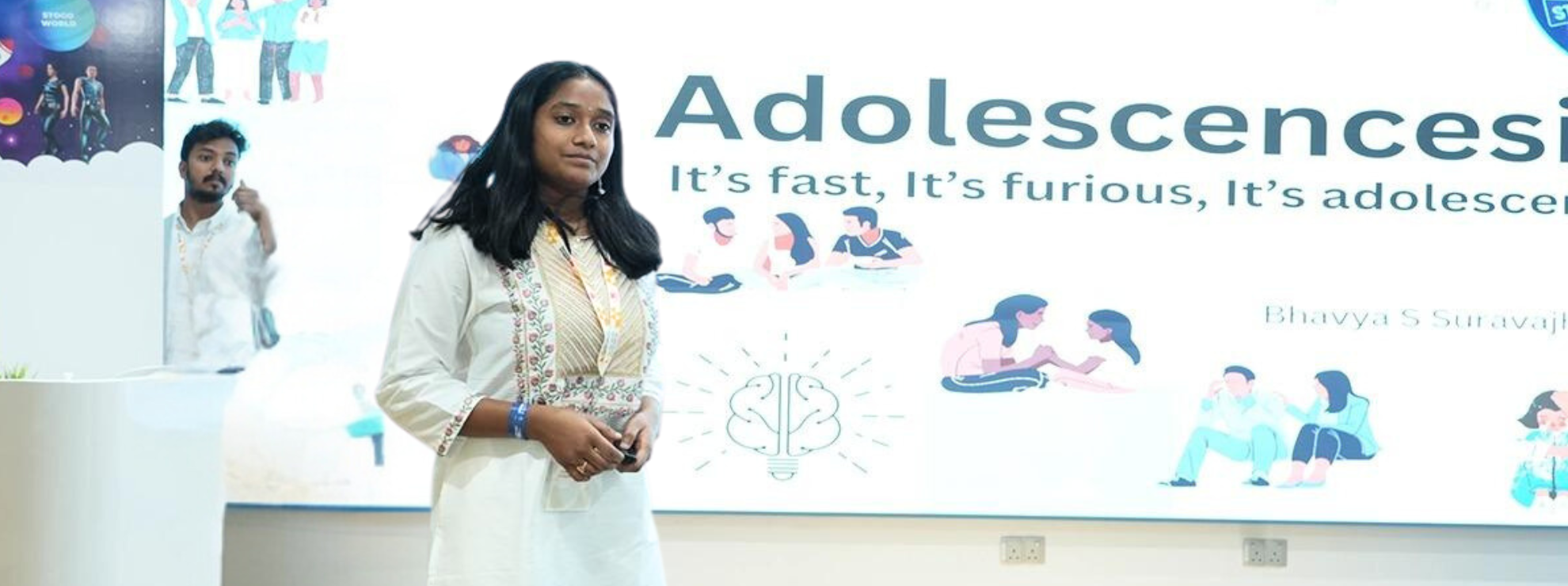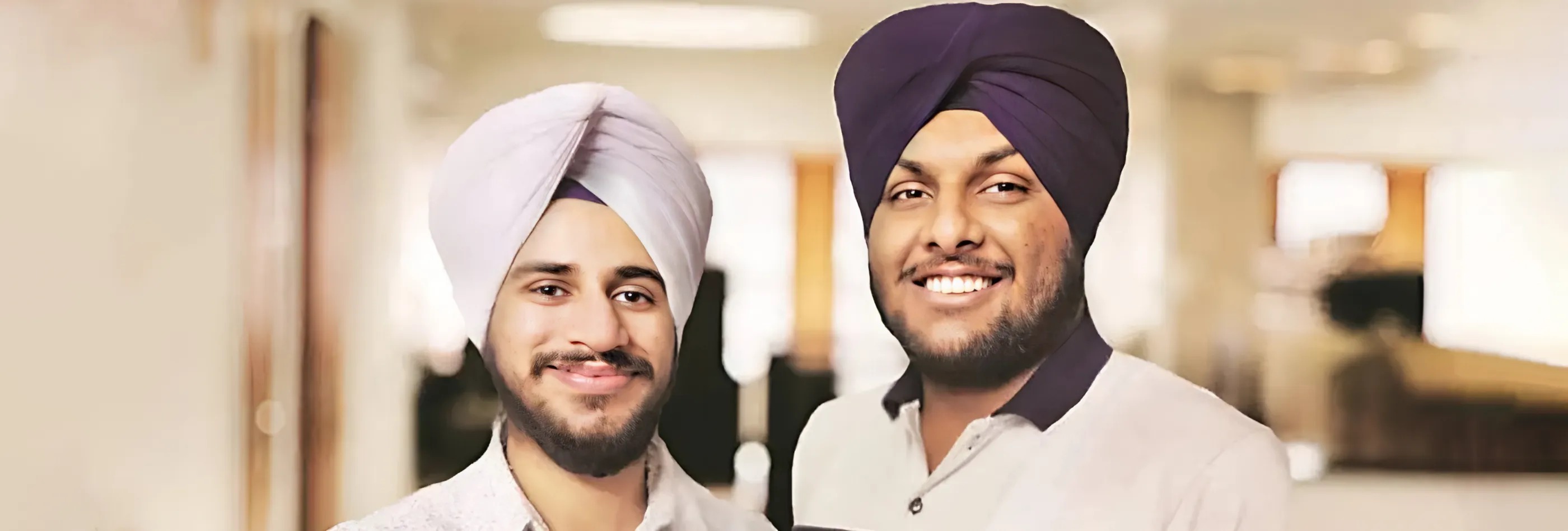(November 14, 2024) One afternoon in Toronto, Riya Karumanchi was at a friend’s house when she noticed her friend’s grandmother, who was visually impaired, moving slowly and carefully around the room. The woman relied on her white cane, tapping it as she went, trying to feel her way through. The scene left a powerful impression on young Riya. “She was bumping into a lot of things, trying to get around,” Riya recalled. “She told me the device she was using was literally just a stick. And it’s never been updated.” That ordinary white cane, a standard for over a century, suddenly looked painfully outdated and insufficient. Riya could not shake the question: Why hadn’t anyone improved this?
From that moment, Riya was on a mission. Her idea was simple yet revolutionary: visually impaired people deserve modern tools, just like everyone else. She founded SmartCane, a high-tech reimagining of the white cane that uses haptic-based GPS navigation and ultrasonic sensors to guide visually impaired users safely. “It was just so baffling to me,” Riya said in an interview, “that nobody invented and innovated on something so traditional. And it’s been like that for so long.”
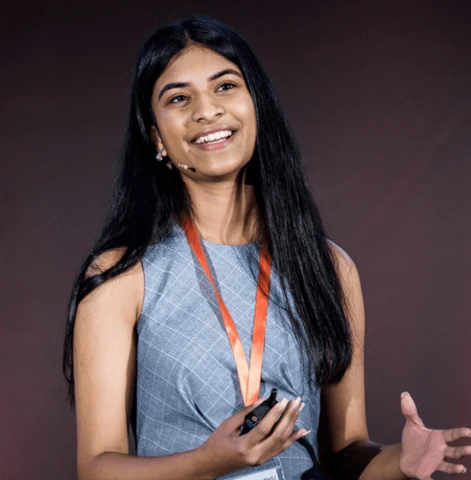
Riya Karumanchi
Riya’s work quickly expanded. Over the past few years, she has launched two med tech companies. In addition to SmartCane, she founded another company focused on developing a wearable device for monitoring patients in retirement homes. Her work on this led her to join Deloitte’s aging technology team, where she led an innovation project to develop a wearable device powered by machine learning to predict falls up to three weeks in advance, aiming to improve the quality of life and independence for elderly users.
Turning Vision into Reality
With each step, Riya spent hours researching assistive technologies, often surprised by how overlooked the accessibility community was. “There are so many unsolved problems around the world,” she explained. “The accessibility community was a huge group that was being left behind!” Her goal went beyond improving one device—she wanted to set a new standard for inclusive innovation.
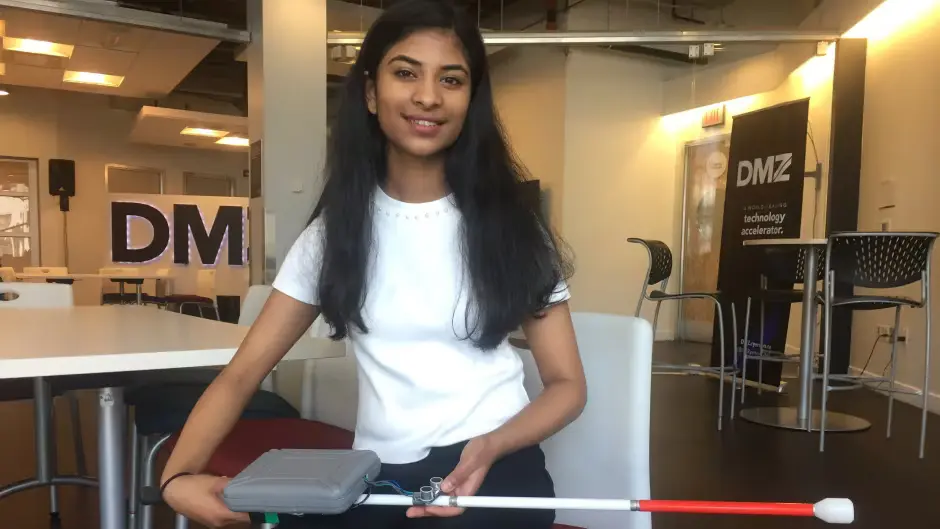

Riya with SmartCane
With the SmartCane, Riya wanted to bridge a technological gap for the visually impaired. The cane uses GPS to guide users with vibrations—one buzz for left, two for right. Ultrasonic sensors detect obstacles from knee to head level, alerting the user with vibrations. In the future, Riya plans to add a camera with AI that could recognize faces and identify objects. “It’s about improving accessibility and empowering people to move independently,” she explained, summing up SmartCane’s mission.
Her SmartCane prototype gained support from both the visually impaired community and investors. She raised over $85,000 from major companies like Microsoft and Arrow Electronics, and with a team of engineers, brought the SmartCane closer to commercialisation. “We’ve had so much support, and it’s been really helpful, so I’m excited to actually get the cane into the market,” she said.
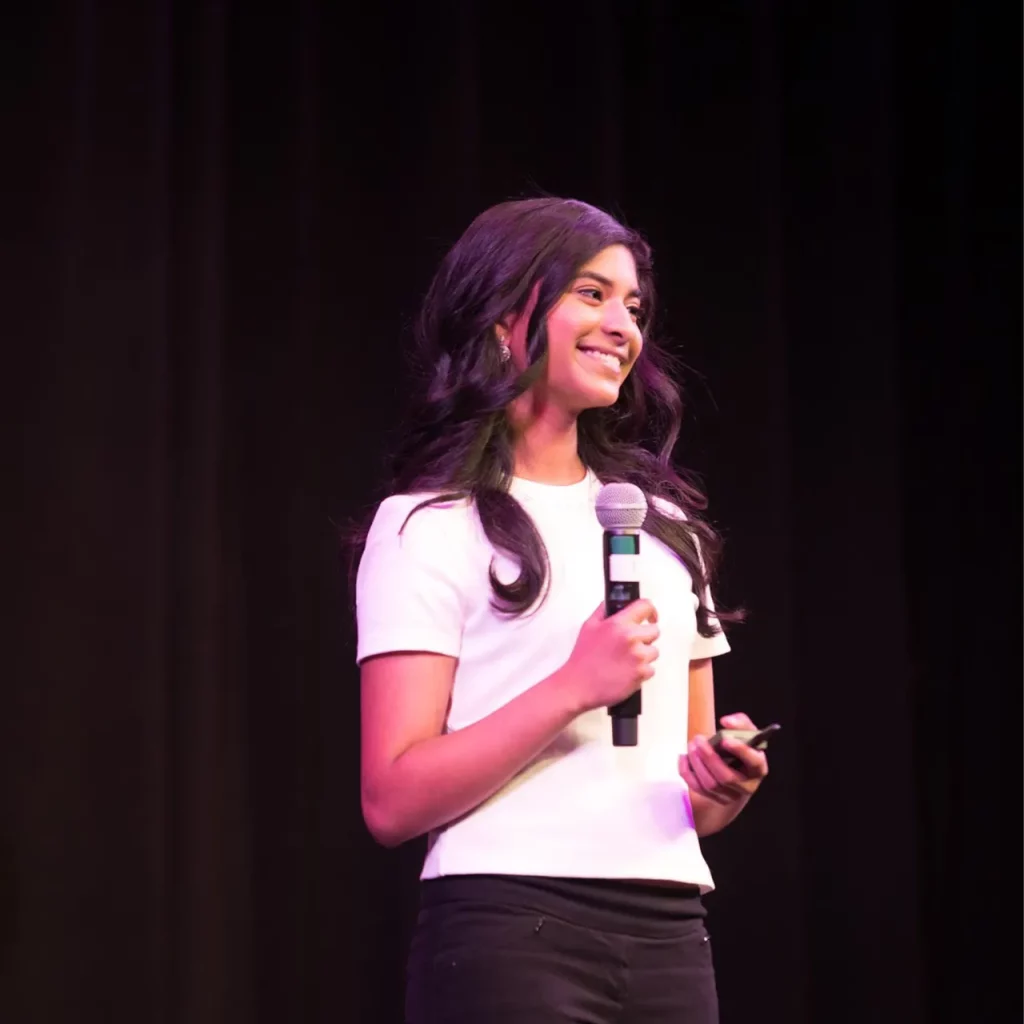

A Second-Generation Perspective
Riya’s ambition and work ethic come from her close-knit Indian family in Canada, part of a vibrant community that values social responsibility. Her parents, who encouraged her curiosity and creativity, also instilled in her a sense of responsibility to use technology for real-world solutions. “They always pushed me to think about how I could make a difference,” the Global Indian said. Their support, along with her community’s values, helped her stay determined as she worked to make her vision a reality. Like many young, second-generation Indians, Riya balances respect for her heritage with a forward-thinking approach, finding ways to contribute to both her local and global communities
A New Generation of Women in STEM
Riya’s success reflects a broader movement: young women are increasingly making their mark in science, technology, engineering, and math (STEM). Riya herself recognises this shift. “I’ve been seeing an amazing movement that’s been encouraging more and more females to pursue a career in STEM, with so many resources and support. This is wonderful, and we need more things like this!”, said the girl who is pursuing MS computer science from Stanford University. Although women remain underrepresented in certain tech fields, initiatives that provide mentorship and STEM exposure are helping young girls find their place in these traditionally male-dominated arenas.
Riya’s success has inspired her to share her insights with others. She currently mentors startup founders in Silicon Valley and Toronto, particularly helping young people get started in entrepreneurship.
Exploring New Frontiers
Beyond health tech, Riya has recently turned her attention to clean technology, interested in how engineering can help develop sustainable energy solutions. This new area represents her commitment to using her skills and experience for social impact, whether in health, accessibility, or the environment. She’s currently exploring ideas in energy resource engineering and hopes to contribute to innovations that advance clean tech in practical ways.
Looking Ahead
Riya’s goal is to create products that make a meaningful impact on people’s lives. Her SmartCane is just the start of her vision for accessible technology, and her work with elderly care and interest in clean tech show her commitment to addressing real-world problems. “Instead of building a company that has a valuation of a billion dollars, it’s the person that can impact a billion people,” she said. “It’s ambitious, but that’s my goal.”
In Riya Karumanchi, we see a powerful example of how today’s youth are using technology not just to innovate, but to make a positive difference. As SmartCane moves closer to commercial release and she explores new projects, Riya’s journey encourages others to think big, act with compassion, and break down barriers in the tech industry.
- Follow Riya Karumanchi on LinkedIn

